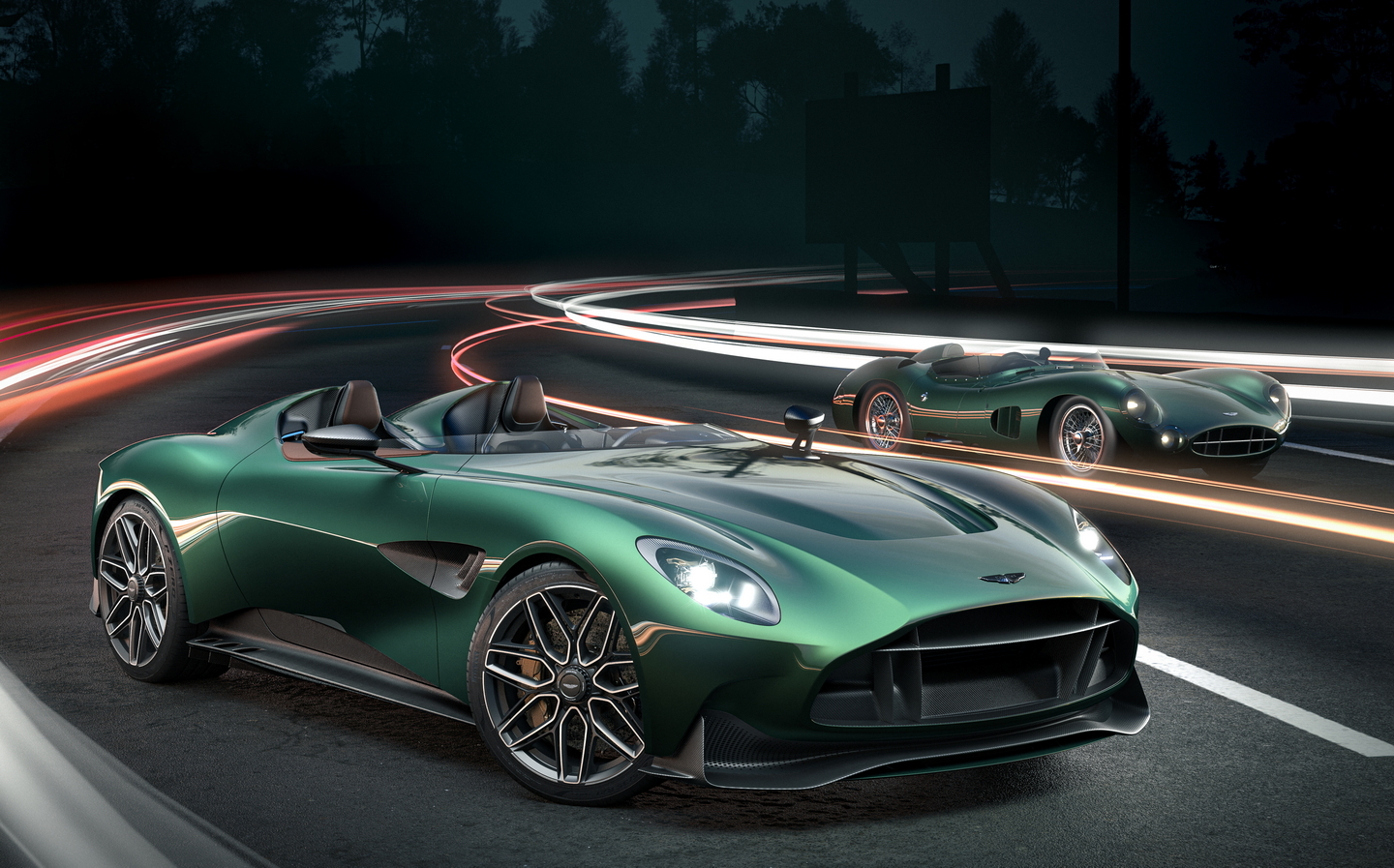Stunning fifties-inspired Aston Martin DBR22 speedster concept revealed
Will make low-volume production
Aston Martin has unveiled the DBR22, a new open-cockpit speedster concept inspired by the company’s Le Mans sports cars of the 1950s.
Created to celebrate the 10th anniversary of the firm’s bespoke projects and customisation division, Q by Aston Martin, the DBR22 draws its influence primarily from the DBR1, the racing car piloted to Aston’s only outright victory in the 24 Hours of Le Mans, by Carroll Shelby and Roy Salvadori in 1959. However, there are also nods to the less successful DB3S, another open-cockpit racer of the same era.
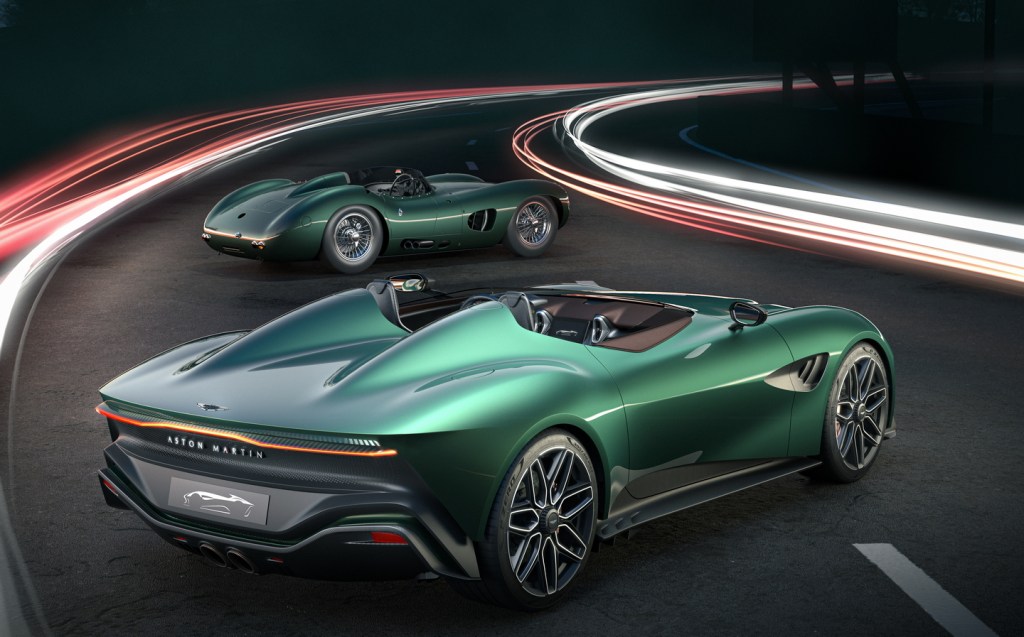
This isn’t the first time Aston has built a speedster inspired by the DBR1: back in 2013, the company unveiled the two-of-a-kind CC100 to mark 100 years since the founding of the company; in 2020 the company also revealed the V12 Speedster of which 88 units were built, each in turn harking back to both the CC100 and DBR1. The DBR22 will also be for low-volume production.
Although the Aston Martin DBR22 shares the same 5.2-litre twin-turbo engine as the V12 Speedster — in this case developing 705bhp — it’s a much different car underneath, with new bonded aluminium subframes front and rear assembled from 3D-printed components, which also contribute to the car’s relative lightness.
That power is sent to the rear wheels through an eight-speed, paddle-shifted automatic transmission resulting in the 0-60mph dash being dispensed with in 3.4 seconds, while the DBR22 is capable of going on to hit a top speed of 198mph.
Similar in form to previous speedsters from Aston (not to mention the Ferrari SP1 and SP2 Monza and McLaren Elva), the DBR22 features an entirely new body hewn from carbon fibre, but very much echoing classic 1950s racing car lines.
Like the DBR1, new car’s front air intake is a minimalist affair (though the opening is much larger) divided horizontally by just a single bar to better aid airflow to the engine.
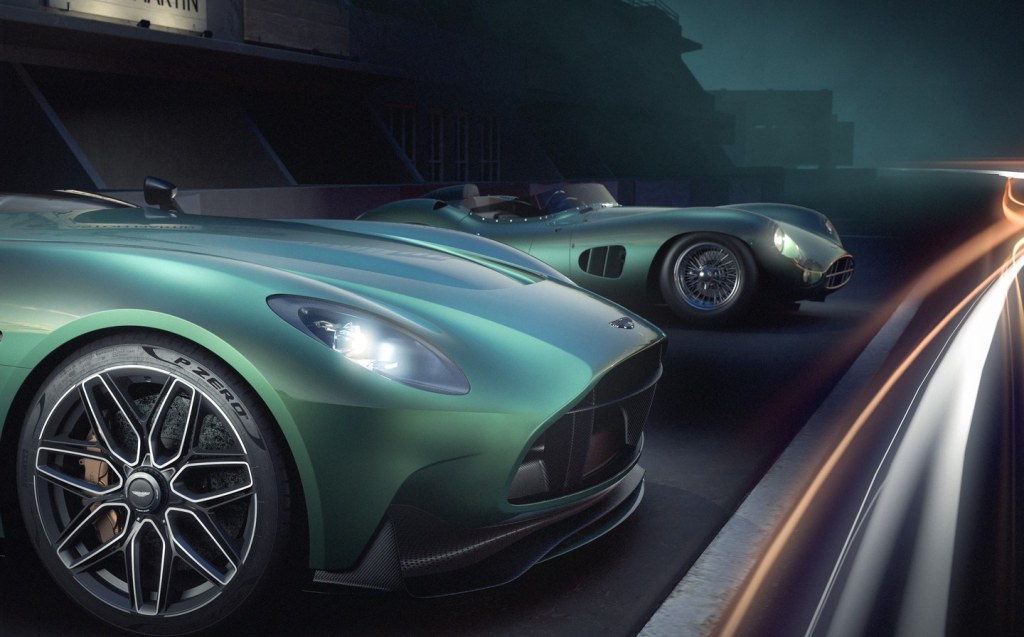
The curve of the wings, the slope of the bonnet, the lustrous racing green colour and the fairings behind the cockpit are also reminiscent of the car that Salvadori and Shelby raced at La Sarthe — before the latter retired from driving due to a heart condition, going on to become a constructor full time.
Whereas the exterior pays homage to racing cars of old, the interior is, apart from the leather trim on the dashboard, entirely modern, with exposed carbon fibre on the door cappings and the structure of the seats also made from carbon fibre.
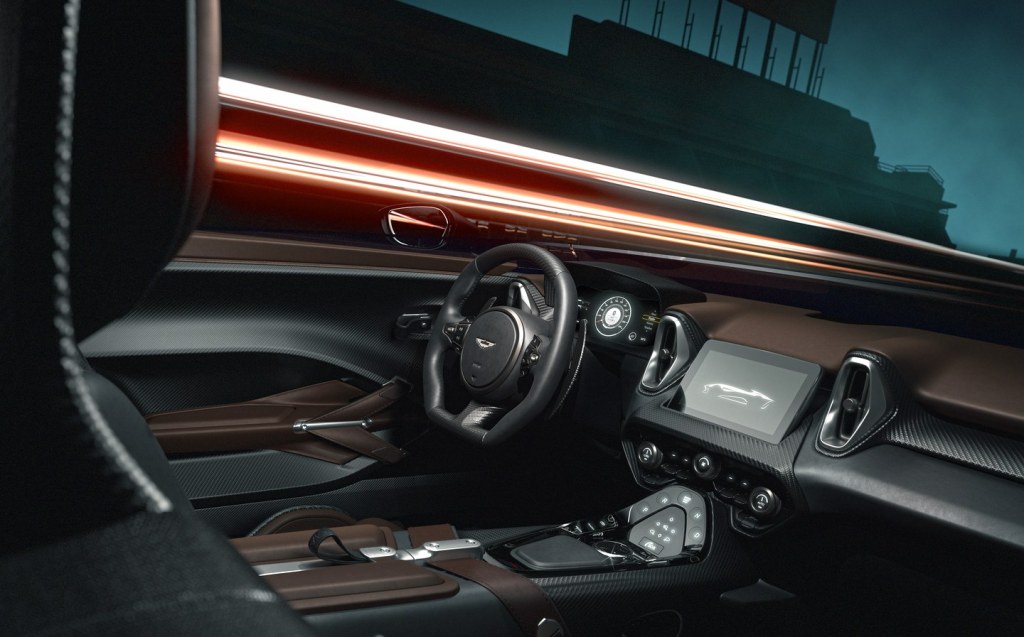
“Technology is pivotal in the construction of DBR22, with extensive use of carbon fibre throughout, and the use of 3D printing for the manufacture of a structural component,” said Aston’s newly appointed chief technology officer, Roberto Fedeli.
“As such, DBR22 showcases Aston Martin’s unique capabilities, with world-class design combined with an agile, intelligent approach to engineering and production.
“For a car that was designed to celebrate the ultimate bespoke customisation service, the engineering developments mean DBR22 truly has the dynamic theatre to match, ensuring the drive is just as addictive as its looks.”
Fedeli arrived at Aston recently alongside Amedeo Felisa, the company’s new CEO who, like Fedeli, previously worked at Ferrari.
Felisa’s appointment as CEO, replacing Tobias Moers, marked Aston Martin’s third CEO in as many years. The company is presently struggling to achieve profitability, despite Moers’ small measure of success in bringing greater financial discipline to the firm. His strategy involved reducing the wholesale supply of cars to cut excess stock and thus the need for discounts, enabling the company to command higher prices and greater profit margins.
Before he left the firm, though, Moers said that the V12 engine that powers the DBR22 would probably remain in production until around 2026 when new Euro 7 emissions regulations (due to go into effect from 2025) will likely kill off most of the small number of 12-cylinder engines still in use by carmakers worldwide.
Aside from low-volume limited editions such as the DBR22, it is unlikely that Aston Martin will again produce a wholly new car powered by a V12 engine. The mid-engined Vanquish and Valhalla supercars due for launch over the next couple of years are to receive Mercedes-derived engines with hybrid assistance.
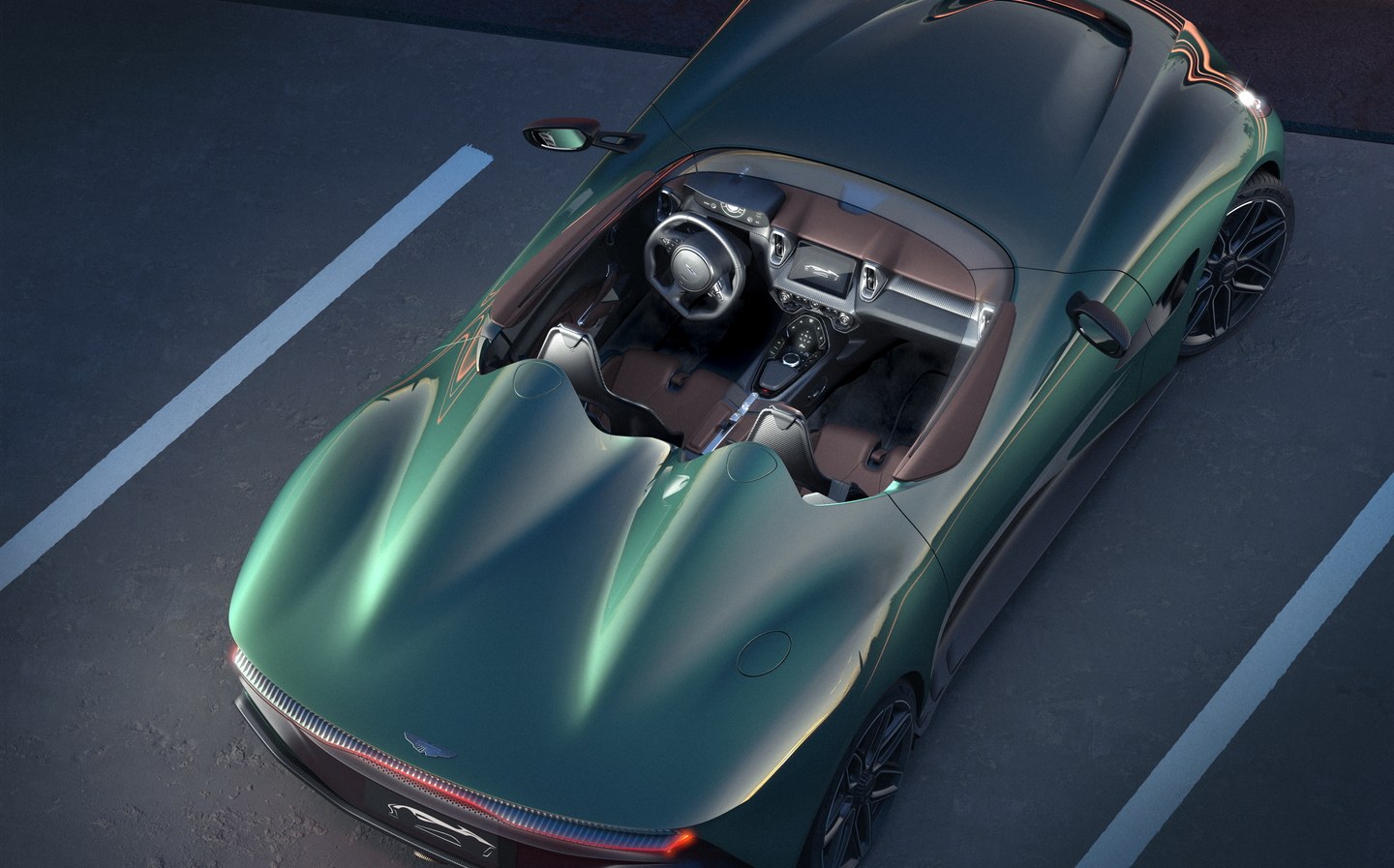
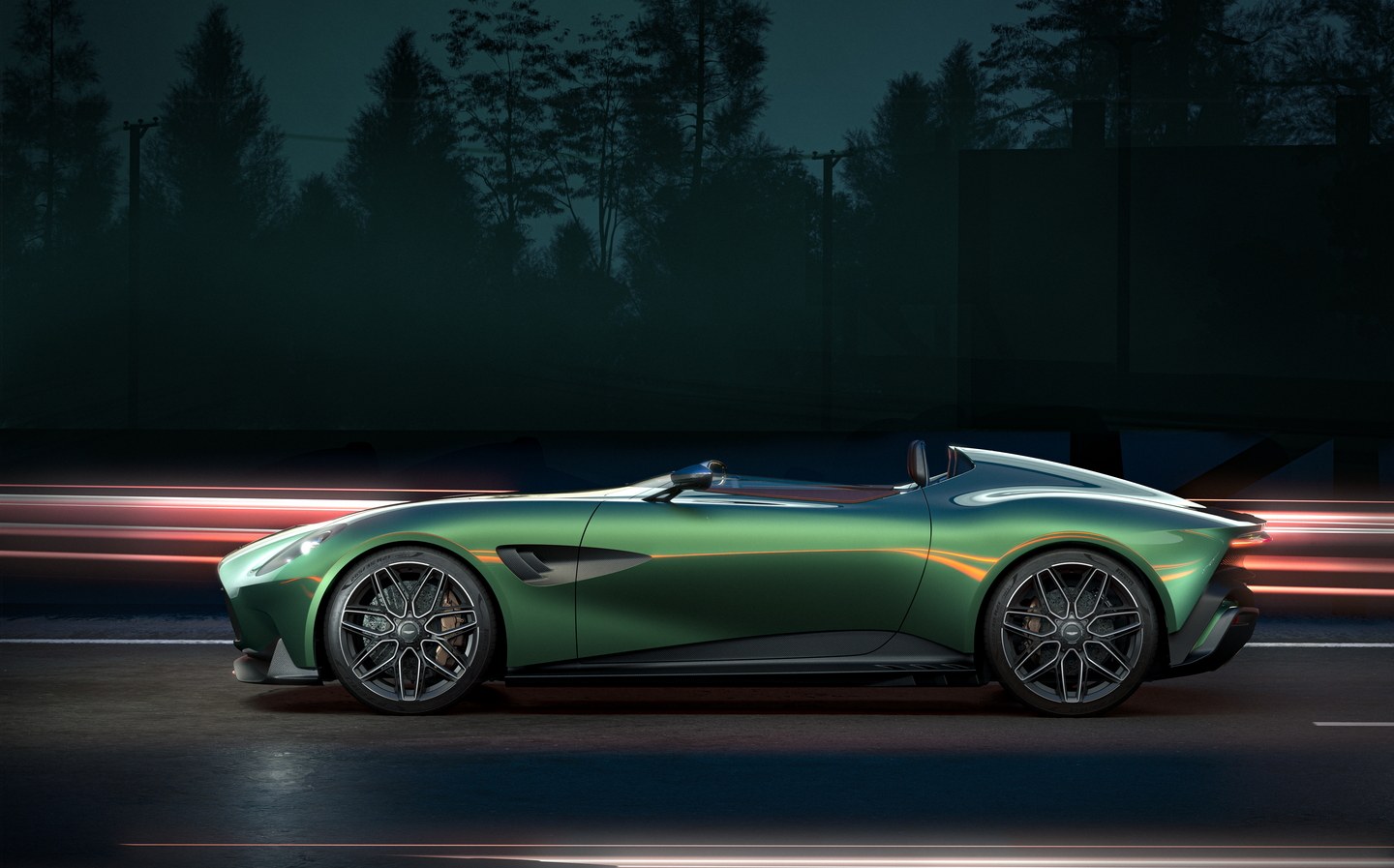
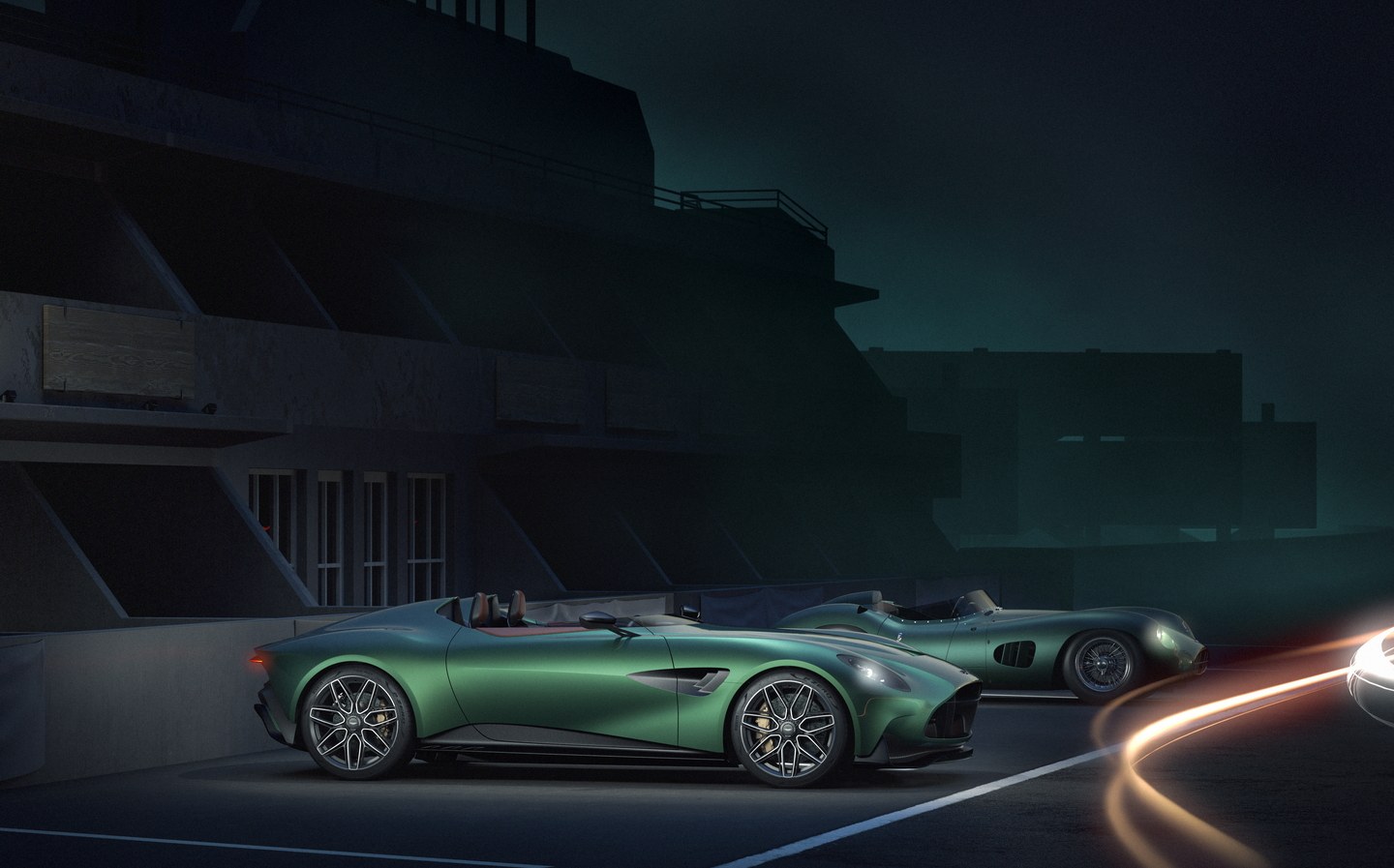
Making its debut at Pebble Beach in California later this week, the DBR22 concept will enter production, with “an ultra-exclusive number” to be built by Q by Aston Martin.
Related articles
- After reading about the new Aston Martin DBR22, you may want to read Will Dron’s review of the Aston Martin DBX707
- Did you know that Aston Martin quadrupled revenue on the back of its success with the DBX?
- And don’t miss this story about Aston Martin eyeing further electrification with its Britishvolt battery agreement
Latest articles
- Bedeo Defender 110 2024 review: Does electric Landie with in-wheel motors make for a perfect off-roader?
- F1 2024 calendar and race reports: What time the next grand prix starts and what happened in the previous rounds
- BYD Seal U 2024 review: Chinese brand adds plug-in hybrid SUV to its electrified line-up
- New Mini John Cooper Works revs up for Nürburgring 24-hour race debut
- Ineos Grenadier Quartermaster 2024 review: British pick-up is a tough mudder but too flawed to be a real workhorse
- Mini Cooper SE 2024 review: All-new electric hatchback is playing to the crowd
- Jeep Wrangler 2024 review: Impressive off road but you’d still have to be a committed contrarian to buy one
- Around 500 Ford workers in UK could go on strike over cost-of-living pay dispute
- Durham solar car team to take part in 24-hour race with smart tyres and night-driving solution


